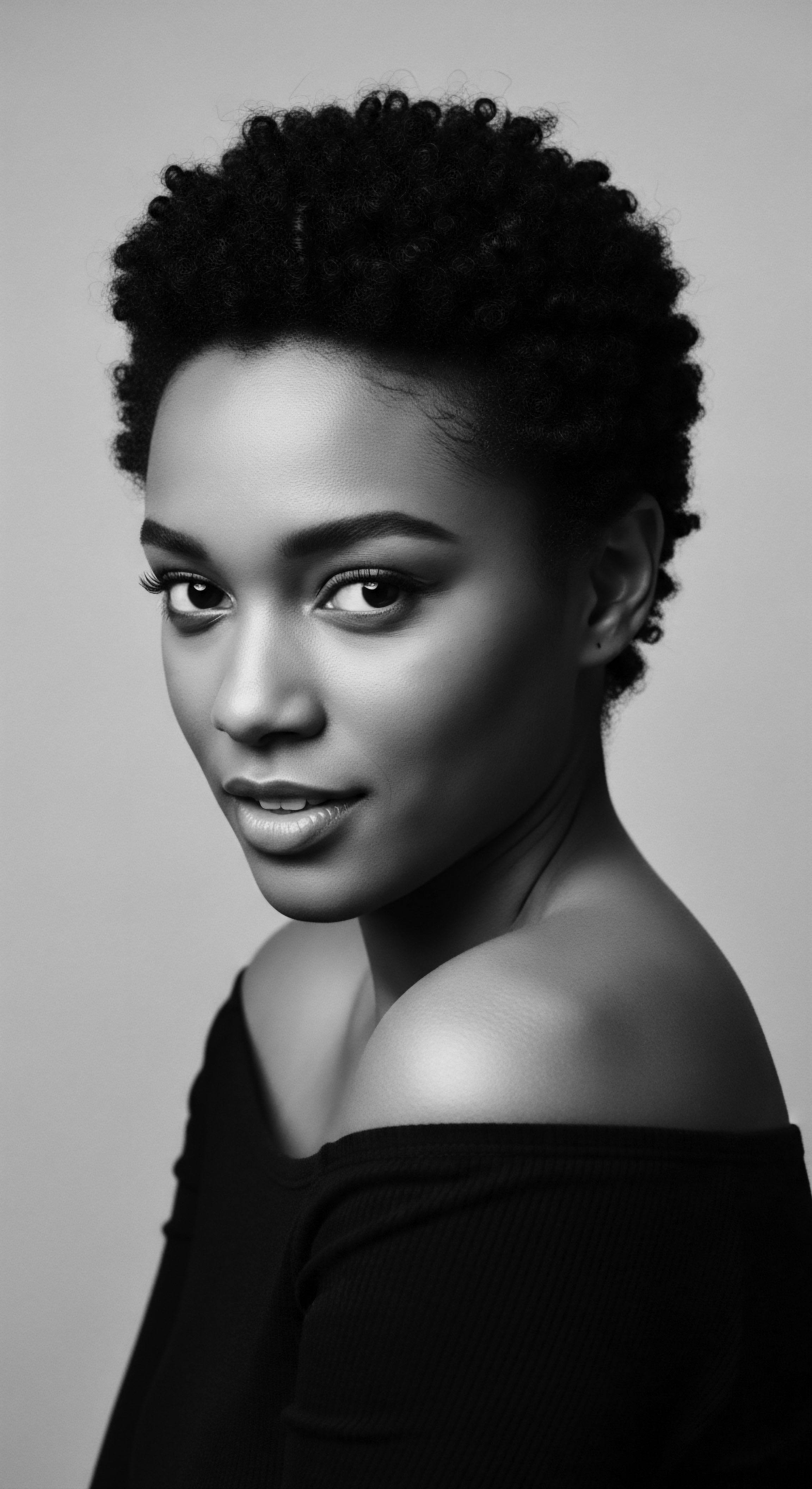
Roots
To journey into the heart of textured hair, particularly its reclamation, is to unearth a living archive, a narrative spun from the very essence of ancestry. Each coil, every wave, and every strand holds within its delicate structure echoes of ancient practices, untold stories, and enduring resilience. This exploration begins not with a choice, but with a birthright—a deep connection to the rich tapestry of human history and cultural identity.
For those of Black and mixed-race heritage, the decision to wear natural hair is far more than a style preference. It is a conscious embrace of lineage, a profound conversation with generations past, and a powerful affirmation of self in the present.
Reclaiming natural hair establishes a profound dialogue with ancestral heritage, transforming personal style into a declaration of historical continuity and identity.

Hair Anatomy and Physiology Specific to Textured Hair
At its fundamental level, textured hair possesses a unique biological architecture, a marvel of evolutionary design. Unlike straight or wavy hair, each strand of textured hair typically exhibits an elliptical or flat cross-section, causing it to coil and curve from the scalp. This distinct morphology means that natural oils produced by the scalp, called sebum, travel less efficiently down the hair shaft, contributing to its inherent need for diligent moisture. The cuticle, the outermost protective layer, often features more raised scales in textured hair, which can contribute to dryness and vulnerability if not properly cared for.
This understanding, now supported by modern scientific inquiry, was intuitively known by ancestral communities who developed intricate routines to nurture and protect their hair, practices rooted in deep observation of its specific needs. Research programs, particularly those focusing on African hair and skin, increasingly highlight how the structure and physiology of hair in people of African ancestry differ from other ethnic categories, necessitating tailored care and understanding (L’Oréal, 2024).
The follicle itself, the tiny organ from which each hair grows, also has a distinct curvature in textured hair. This curvature, combined with the way cells arrange themselves as the hair grows, causes the characteristic coiling pattern. This spiraling growth pattern, a protective adaptation against intense ultraviolet radiation in equatorial climates, ensured scalp protection for early human ancestors, illustrating hair’s role beyond mere aesthetics, serving a vital biological purpose. This biological blueprint, passed down through generations, links contemporary textured hair to its earliest forms, making it a tangible connection to the origins of humanity itself.

Why Does Textured Hair Crave Specific Care?
The very structure of textured hair, with its unique bends and curves, creates points of weakness along the shaft. These points are more susceptible to breakage if not handled with care. This anatomical reality underpins centuries of traditional care practices that prioritized gentle manipulation, protective styling, and deep conditioning.
Our ancestors, lacking microscopes and scientific terminology, recognized these vulnerabilities through direct experience, developing methods that minimized stress on the hair. Their wisdom, born from observation, directly informs modern understanding of why products and techniques designed for straight hair are often unsuitable for textured coils and curls.

Textured Hair Classification Systems
Modern classification systems, like the widely recognized Andre Walker typing system, attempt to categorize textured hair into numerical and alphabetical types (e.g. 3A, 4C). While these systems offer a shorthand for describing curl patterns, their origins sometimes carry a subtle echo of colonial biases, often prioritizing looser curl patterns.
Historical perceptions, unfortunately, sometimes deemed tightly coiled hair as less desirable or “unruly,” a discourse tied to efforts to maintain perceived hierarchies (White & White, cited in CREAM – Centre for Research and Education in Art and Media, 2021). This is in stark contrast to ancestral societies, where hair was revered in all its forms.
In many ancient African cultures, hair was not categorized by a numerical grade but by its symbolism and its ability to be sculpted into intricate designs. These designs communicated social status, age, marital standing, tribal identity, and even spiritual beliefs. The very idea of categorizing hair for aesthetic comparison, rather than for its cultural or functional purpose, reflects a shift in worldview. Reclaiming natural hair today often involves rejecting these external, often Eurocentric, grading systems in favor of appreciating the innate beauty and versatility of one’s own unique texture, honoring a more ancient reverence.
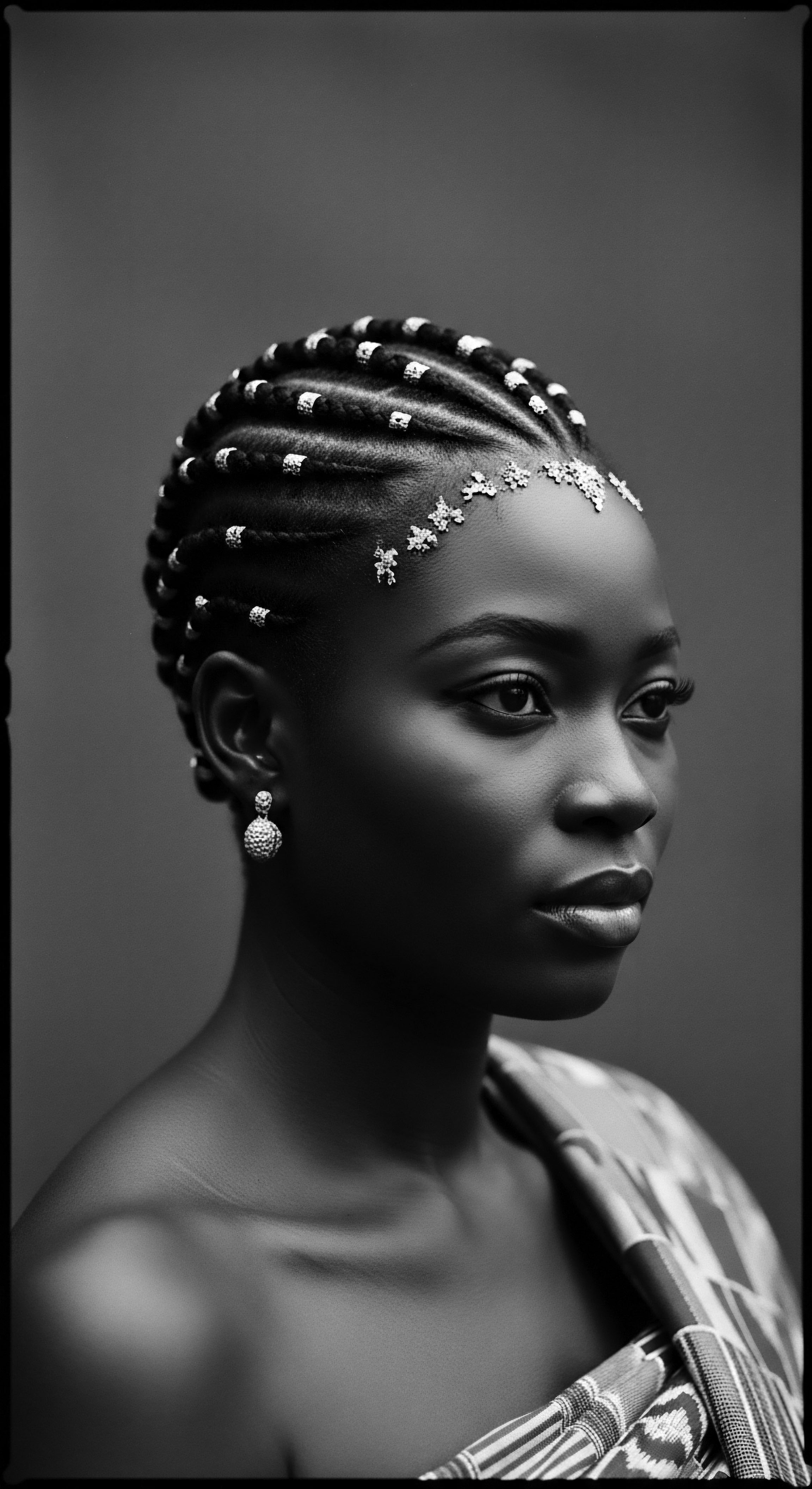
The Essential Lexicon of Textured Hair
The language we use to describe textured hair has evolved, mirroring societal attitudes and cultural shifts. Terms like Coily, Kinky, Curly, and Wavy describe the various patterns hair can take. Beyond these descriptive terms, a deeper vocabulary emerges when considering the historical context of textured hair. This lexicon includes words for traditional tools, styling practices, and the deep cultural meaning embedded in hair.
- Cornrows ❉ Tightly braided rows lying flat against the scalp, with origins dating back to 3000 BCE in parts of Africa, used for various purposes, including communication and identifying tribal affiliation.
- Bantu Knots ❉ A style where hair is sectioned and twisted into small, coiled buns, originating from the Zulu tribe in South Africa and symbolizing femininity and social status.
- Locs ❉ Intertwined hair strands that form rope-like structures, with historical presence in various African cultures and often spiritual connotations.
- Afro Pick ❉ A tool with long, wide-set teeth designed to lift and shape afro-textured hair, with archaeological evidence suggesting similar combs existed as far back as 7000 years ago in ancient Kush and Kemet.
This shared vocabulary connects modern natural hair wearers to a lineage of care and cultural expression, forming a continuous chain of understanding and identity across time and geography.
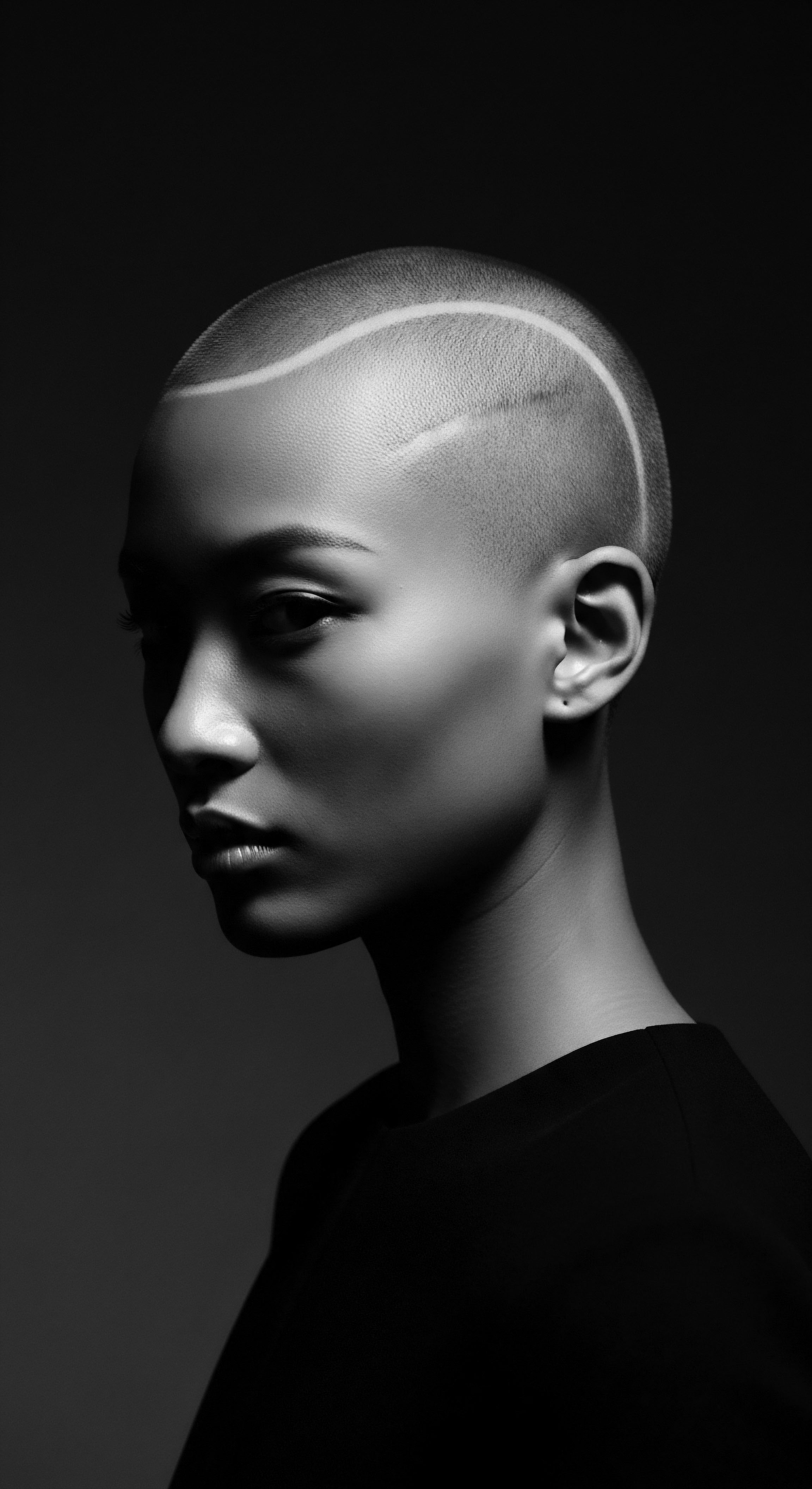
Hair Growth Cycles and Influencing Factors
Hair growth proceeds through distinct phases ❉ Anagen (growth), Catagen (transition), and Telogen (resting). While these biological cycles are universal, ancestral wisdom recognized the interplay of environmental factors, diet, and overall well-being on hair vitality. Traditional African communities understood that a thriving body supported thriving hair. Their practices involved nourishing foods, herbal remedies, and a holistic approach to health that instinctively supported robust hair growth.
Consider the use of various plant-based ingredients in traditional African societies. These were not merely cosmetic additions; they often provided essential nutrients and protective qualities that supported healthy hair cycles. For instance, the traditional use of ingredients like shea butter and various oils speaks to an ancient understanding of moisture retention and scalp health, directly influencing hair growth and strength. Today, scientific studies increasingly validate the benefits of such traditional ingredients, bridging ancient knowledge with modern understanding of hair biology.

Ritual
The act of styling textured hair is an intimate ritual, a practice steeped in generational memory and cultural continuity. Beyond mere adornment, these techniques and tools represent a profound connection to heritage, transforming hair into a canvas for storytelling and identity. From the ancient ceremonial adornments to the modern expressions of self, the methods of shaping textured hair carry layers of meaning, reflecting both personal journeys and collective histories.

Protective Styling Encyclopedia
Protective styles, such as braids, twists, and locs, are cornerstones of textured hair care. Their ancestral roots run deep, far beyond contemporary trends. These styles historically served practical purposes, shielding hair from environmental damage and minimizing manipulation. Yet, their significance extended much further.
In pre-colonial Africa, intricate hairstyles were elaborate forms of communication, capable of conveying an individual’s social status, age, marital status, wealth, and tribal affiliation (Afriklens, 2024). The creation of these styles was often a communal activity, fostering bonds and passing down cultural knowledge through shared moments of care.
During the transatlantic slave trade, the significance of these styles deepened. For enslaved Africans, forced to endure harsh conditions and stripped of cultural markers, hair became a silent, yet potent, form of resistance. Cornrows, in particular, were used as coded messages or even maps to freedom, with patterns indicating escape routes or locations of hidden resources (BLAM UK CIC, 2022). This extraordinary ingenuity transformed a personal style into a tool of survival and defiance, a testament to the enduring spirit of a people striving to hold onto their heritage.
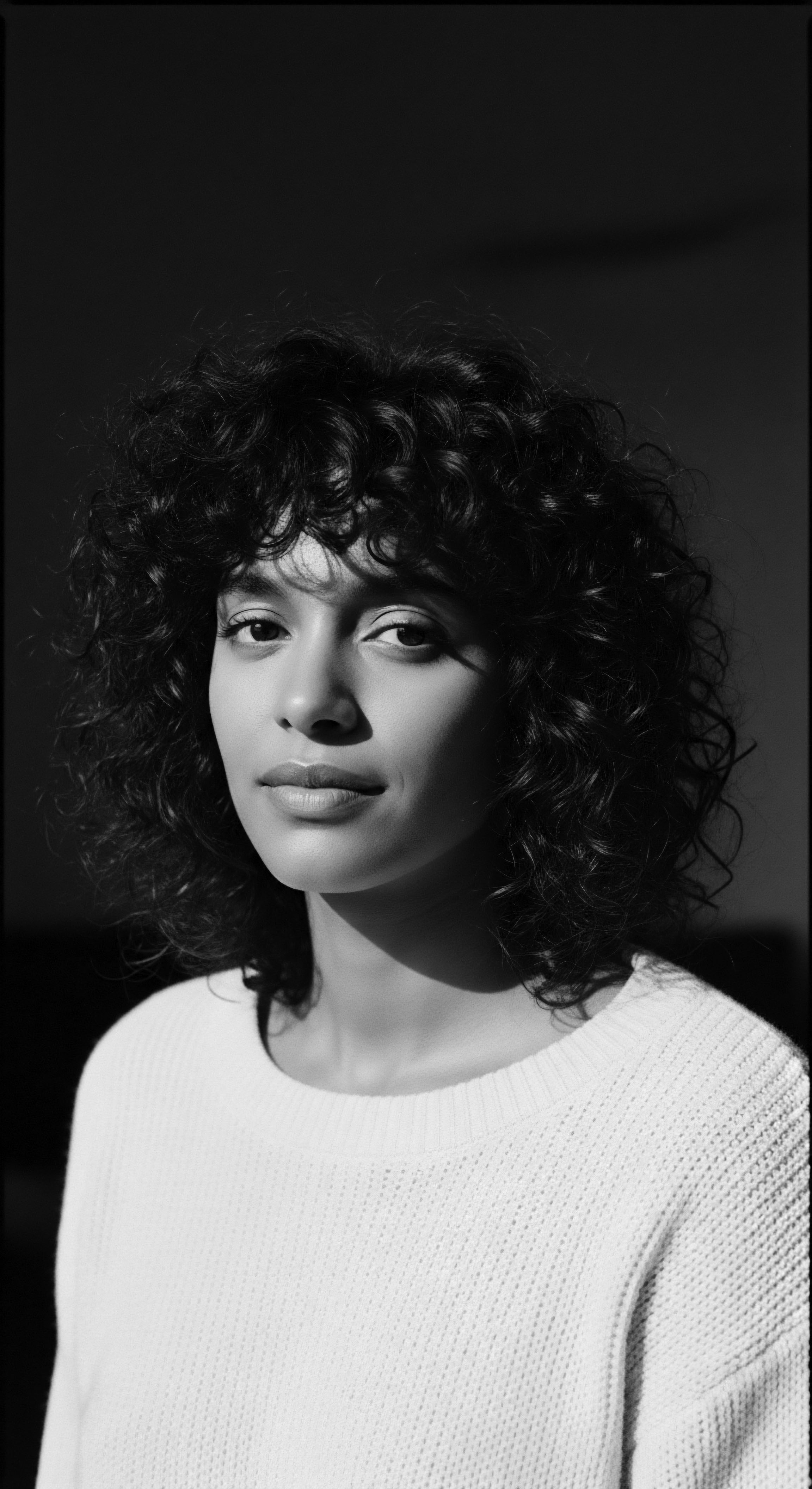
How Did Ancestral Braiding Practices Preserve Knowledge?
The meticulous process of creating traditional protective styles was often accompanied by oral histories, songs, and communal exchanges. Grandmothers and aunties taught younger generations not just how to braid, but why each style mattered, what it symbolized, and the stories it carried. This oral tradition served as a vital means of cultural preservation, ensuring that the wisdom of generations was passed down, even when written histories were denied. The act of sitting together, hands working through hair, became a conduit for identity, belonging, and a shared understanding of their heritage.

Natural Styling and Definition Techniques
The exploration of natural styling involves embracing the inherent beauty of textured hair’s various patterns without altering its natural form. Techniques like wash-and-gos, finger coils, and shingling seek to enhance the hair’s natural curl or coil definition. Historically, before the advent of modern styling products, ancestral communities utilized natural emollients and techniques to achieve defined styles.
Plant-based oils, butters, and sometimes even natural clays were used to provide moisture and hold, allowing the hair’s natural patterns to shine. The Himba tribe in Namibia, for instance, uses a mixture of butterfat and red ochre, known as otjize, not only for its symbolic connection to the land and ancestors but also as a practical way to protect and define their intricate dreadlocked styles.
This approach to styling honors the hair’s intrinsic qualities, moving away from forced alteration towards celebration. It connects to an ancestral reverence for the hair’s natural state, viewing it as a part of the self that should be nurtured and expressed authentically. The simplicity and effectiveness of some traditional methods reveal an intuitive understanding of textured hair that science is only now beginning to fully quantify.
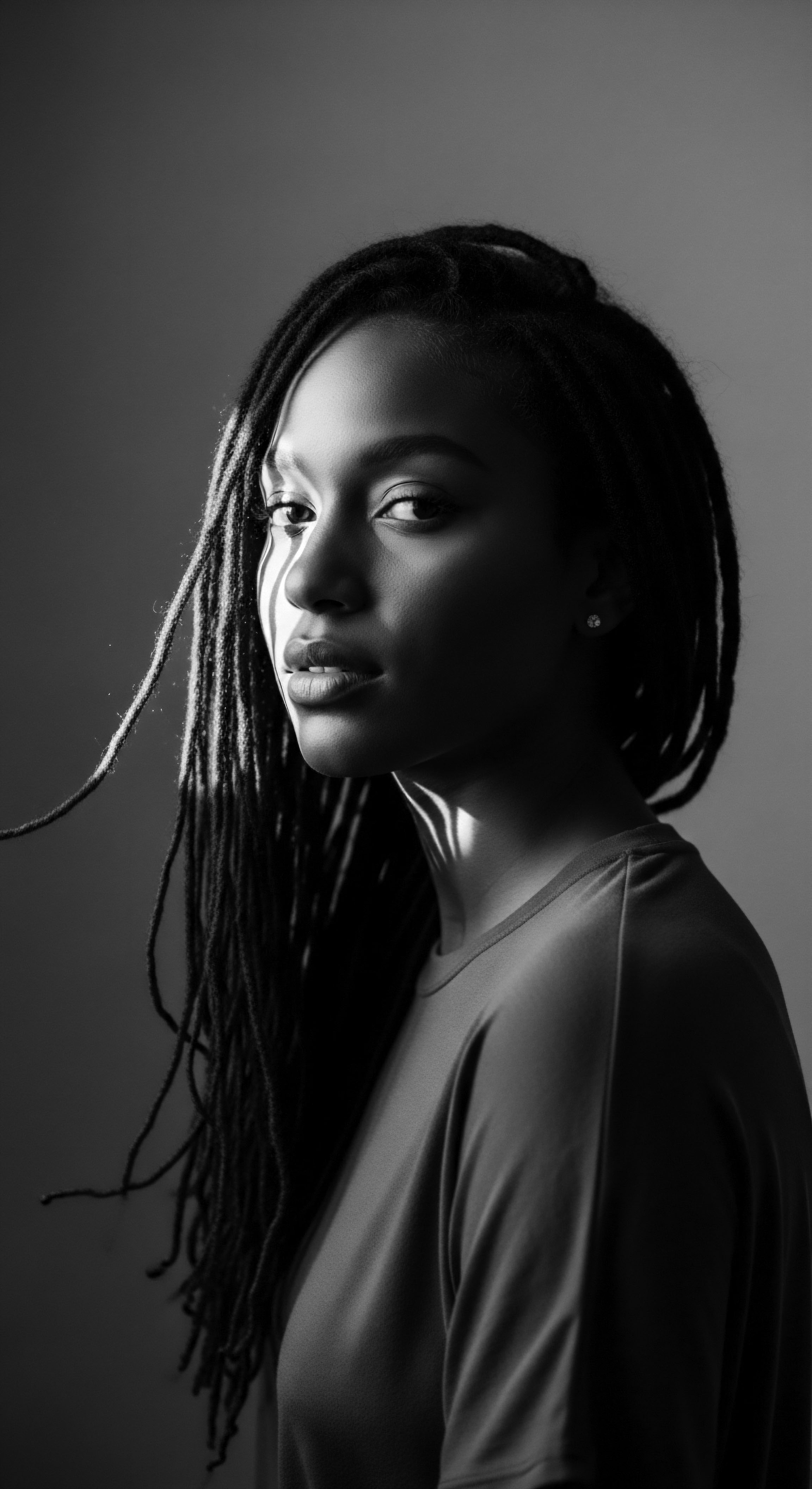
Wigs and Hair Extensions Mastery
Wigs and hair extensions, often perceived as contemporary accessories, hold a long and culturally significant history in African societies. In ancient Egypt, for example, wigs were not only indicators of social status, wealth, and religious affiliation but also served practical purposes like protection from the sun. They were crafted with skill, often from human hair, plant fibers, or wool, and adorned with precious metals and jewels. The artistry involved in creating these hair augmentations spoke volumes about an individual’s place within society.
This historical context reframes the modern use of wigs and extensions within textured hair communities. They are not merely tools for disguise or fleeting fashion statements; they continue a heritage of versatility, self-expression, and, at times, protection. The ability to transform one’s appearance through hair has been a powerful tool of agency throughout history, allowing for different expressions of identity and status depending on context and occasion.

Heat Styling and Thermal Reconditioning
The history of heat styling for textured hair is a complex one, deeply intertwined with the pressures of conforming to Eurocentric beauty standards. The invention of the hot comb by Madam C.J. Walker in the early 20th century, and the subsequent development of chemical relaxers, offered methods for altering hair texture to achieve a straightened appearance. While these innovations provided choices, they also carried historical weight, often symbolizing a desire to fit into a society that frequently deemed natural textured hair “unprofessional” or “unkempt” (Afriklens, 2024).
In contrast, many ancestral hair practices emphasized minimal heat exposure. Instead, techniques like stretching, banding, or threading hair were used to elongate curls without permanent chemical alteration or damaging heat. This distinction highlights a heritage that prioritizes hair health and preservation over radical alteration. Reclaiming natural hair today often involves minimizing heat styling, returning to gentler, more sustainable practices that honor the hair’s innate structure.
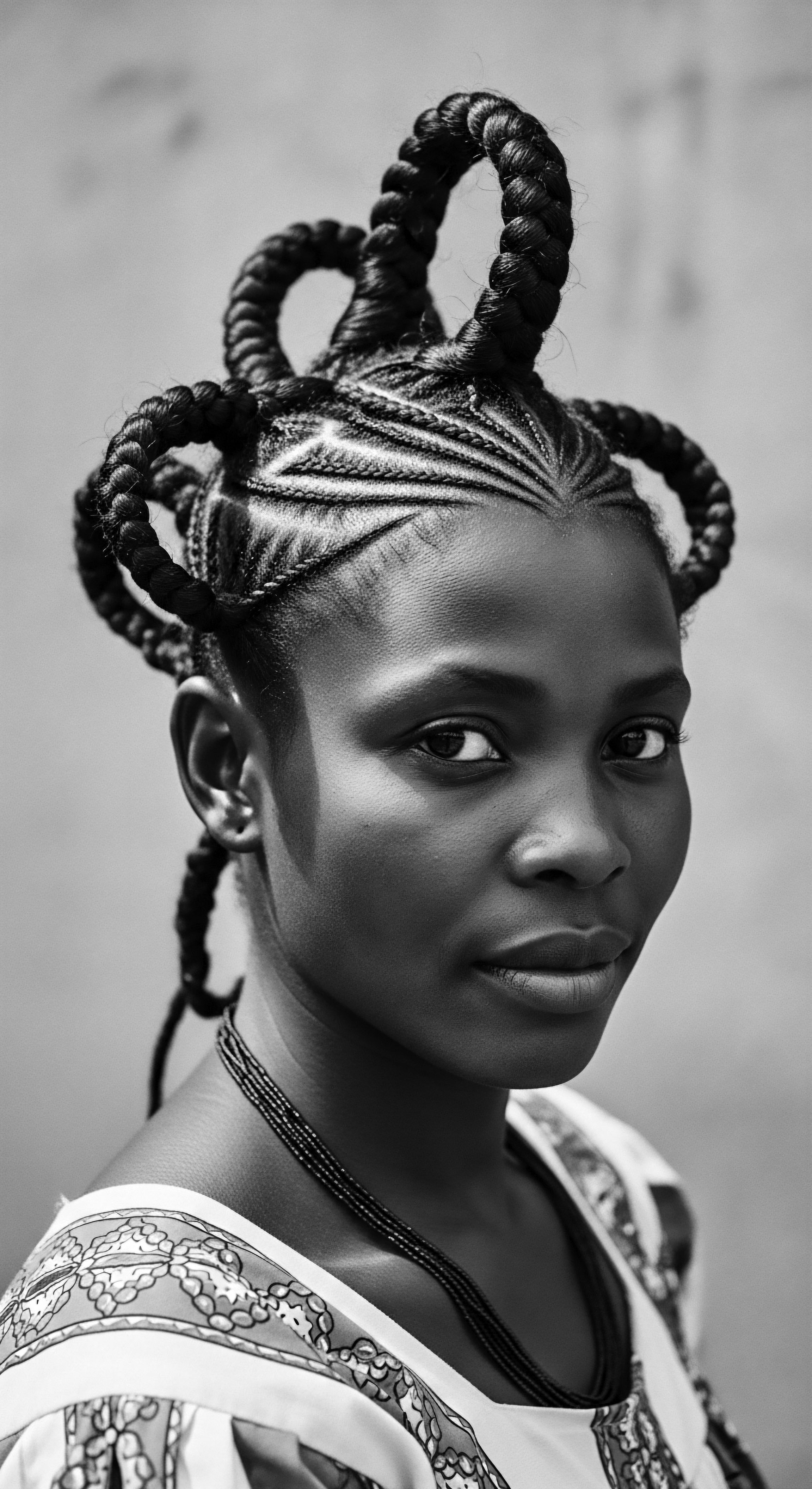
The Complete Textured Hair Toolkit
The tools used for textured hair care are extensions of the hands that wield them, often carrying historical and cultural weight.
- Afro Comb (or Afro Pick) ❉ More than a simple comb, this tool, with archaeological findings suggesting its presence up to 7,000 years ago in ancient Kush and Kemet, evolved from a practical grooming implement to a potent symbol of Black pride and resistance during the Civil Rights era. Its long, widely spaced teeth are ideally suited for detangling and shaping dense, coiled hair without causing breakage.
- Traditional Combs and Picks ❉ Crafted from wood, bone, or even porcupine quills in various African communities, these tools were designed with a keen understanding of textured hair’s needs. They often featured intricate carvings, signifying social status or spiritual beliefs.
- Gourds and Natural Sponges ❉ Ancestral washing rituals sometimes involved natural gourds for rinsing and soft plant fibers or sponges for gentle cleansing, demonstrating an early awareness of non-abrasive care.
- Hair Threading Tools ❉ Fine threads made from cotton or other natural fibers were used with needles or fingers to stretch and style hair, particularly in West African traditions, as a heatless way to achieve elongation and definition.
Each tool represents a thread in the rich tapestry of textured hair heritage, connecting modern practitioners to inventive ancestral solutions. These implements are not merely functional objects; they embody centuries of accumulated wisdom about how to care for and adorn textured hair with respect and efficacy.
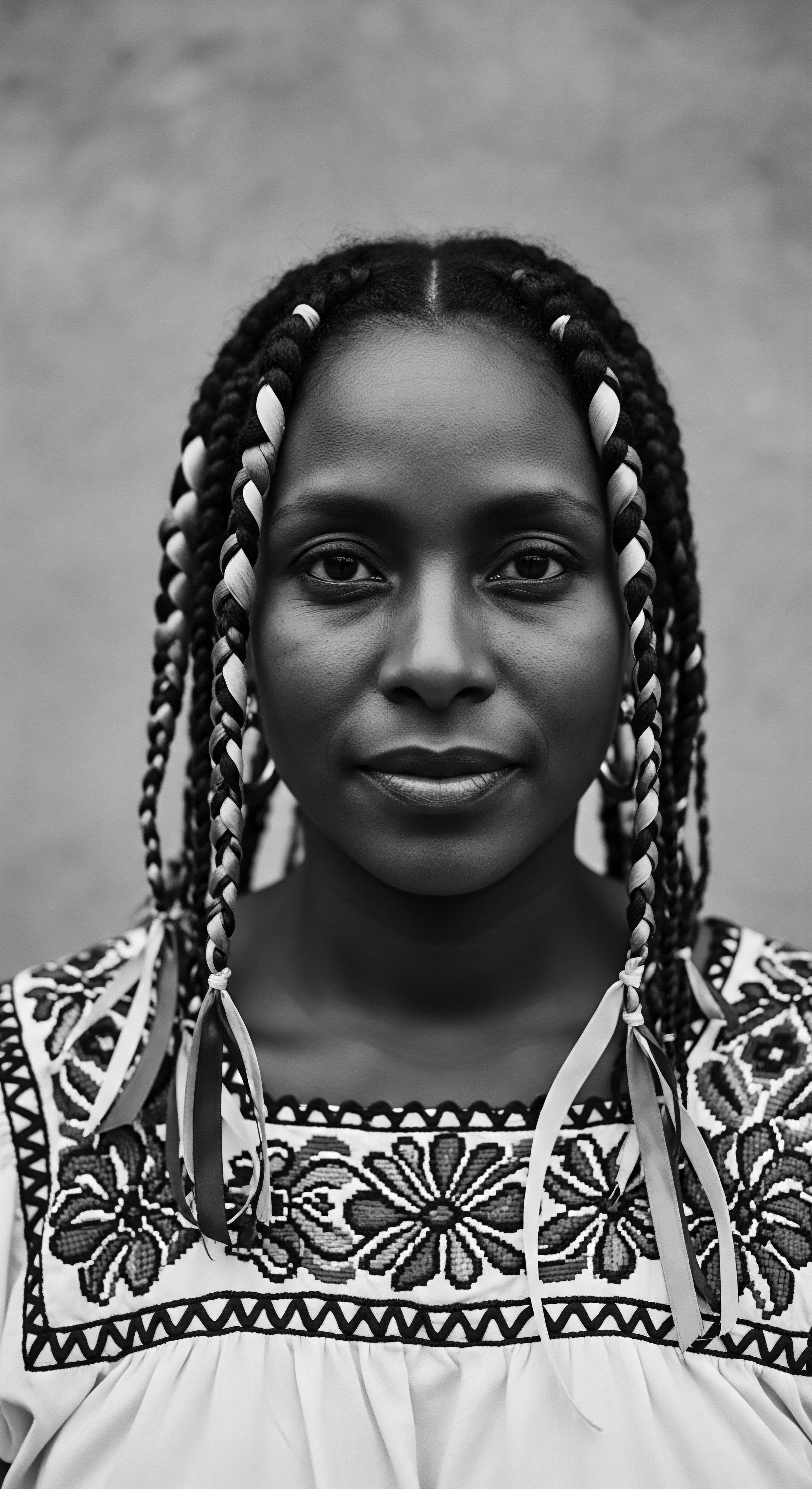
Relay
The journey of reclaiming natural hair is a dynamic relay, passing wisdom from past to present, informing care practices and problem-solving through the lens of ancestral knowledge. This deeply personal yet collectively significant act acknowledges that holistic well-being and hair health are intrinsically linked, a concept long understood by communities steeped in traditional wisdom. It means moving beyond surface-level aesthetics to understand the profound connections between our bodies, our environment, and our cultural legacy.
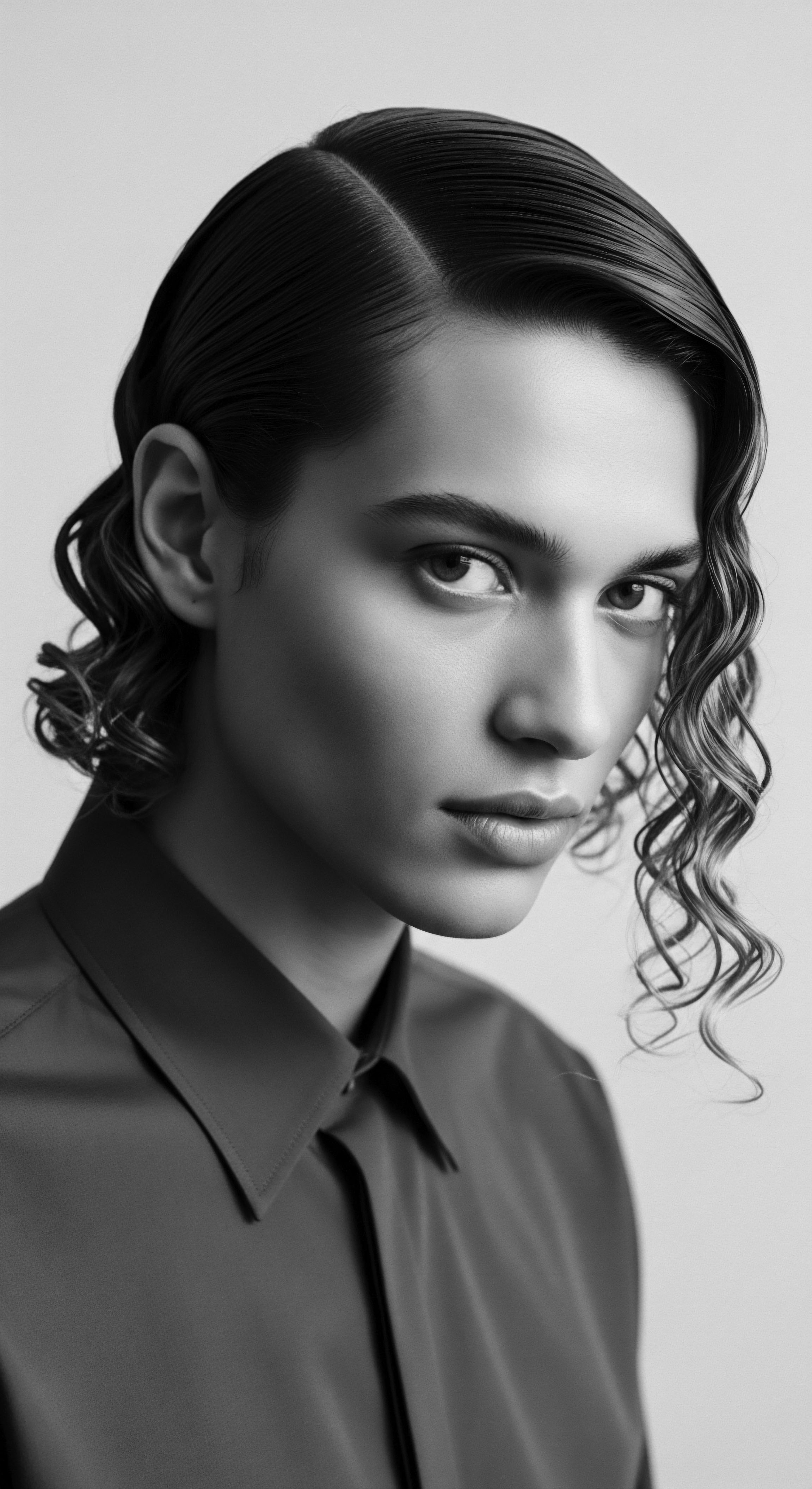
Building Personalized Textured Hair Regimens
Creating a personalized textured hair regimen today often draws upon a synthesis of ancestral wisdom and modern scientific understanding. Historically, hair care was not a one-size-fits-all approach. Communities understood that environmental factors, individual hair characteristics, and available natural resources dictated the most effective practices. For instance, in West Africa, shea butter became a staple for its incredible moisturizing properties, while in other regions, different plant oils or herbal infusions held prominence, all tailored to local conditions and specific needs.
This traditional personalization contrasts sharply with the mass-produced, generic products that flooded markets during periods of forced assimilation. Reclaiming hair often involves a return to this bespoke approach, carefully selecting ingredients and practices that resonate with one’s own hair and heritage. It is about listening to the hair itself, understanding its unique language, and responding with intention, much as our ancestors did. This journey of discovery allows individuals to build regimens that are not just effective but also deeply meaningful.
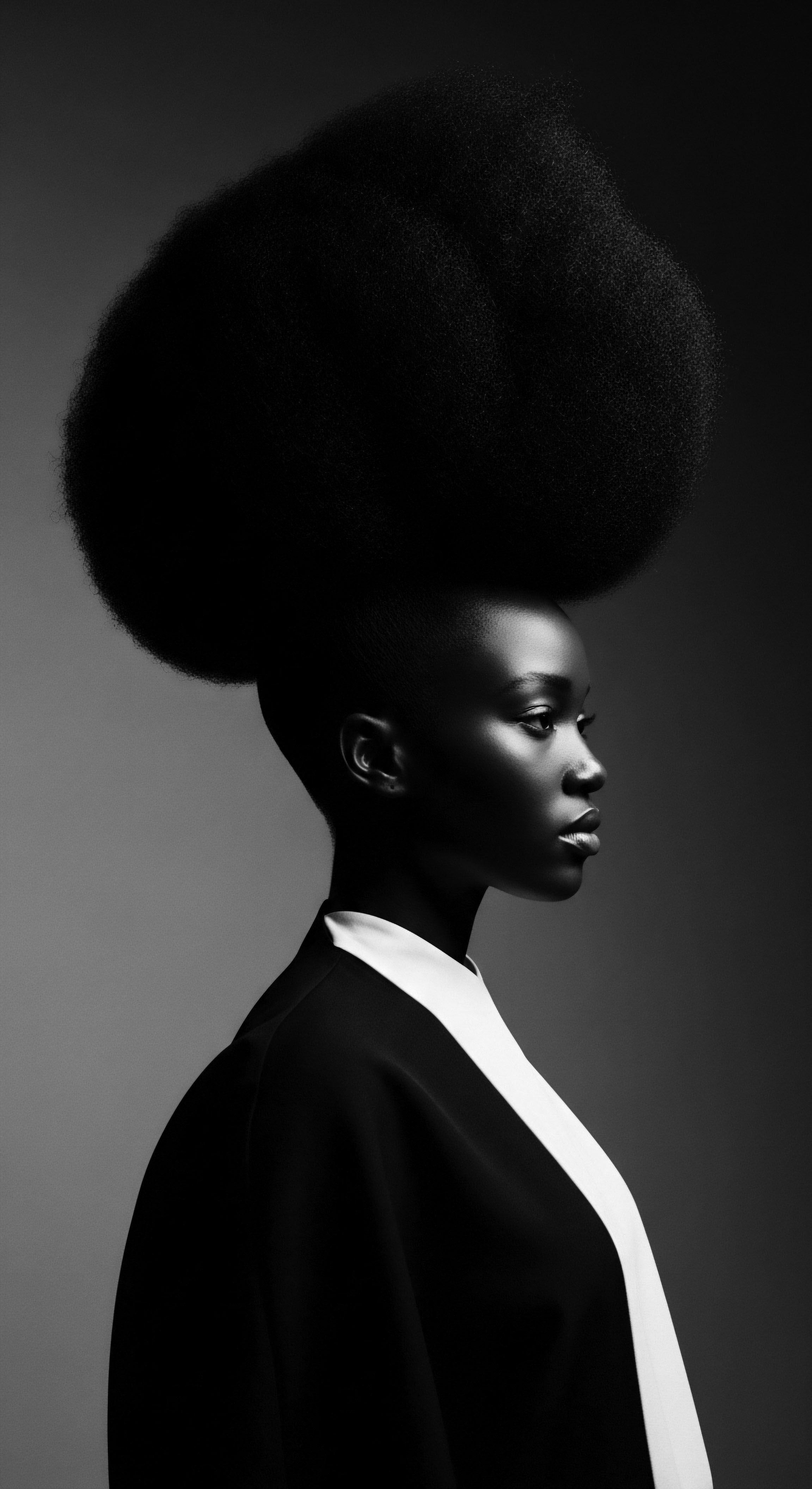
The Nighttime Sanctuary ❉ Essential Sleep Protection and Bonnet Wisdom
The seemingly simple act of covering one’s hair at night holds centuries of history and purpose. The modern bonnet, scarf, or headwrap is a direct descendant of ancient head coverings worn across Africa and the diaspora. These were not only for protection from the elements or for hygiene but also served as symbols of status, spirituality, and modesty.
The practice of wrapping hair at night protected delicate styles, retained moisture, and prevented tangling, extending the life of intricate designs. This ancestral wisdom, prioritizing preservation and respect for the hair, continues to shape contemporary nighttime rituals.
The continuous use of head coverings, from elaborate wraps signifying a woman’s marital status in some West African cultures to the simple sleep bonnet, reflects a deep-seated understanding of hair’s vulnerability and its value. This protection is not just physical; it is also a symbolic act of caring for a part of the self that holds immense cultural and personal meaning.
Nighttime hair protection, a practice spanning centuries, embodies ancestral wisdom for preserving textured hair and its cultural significance.
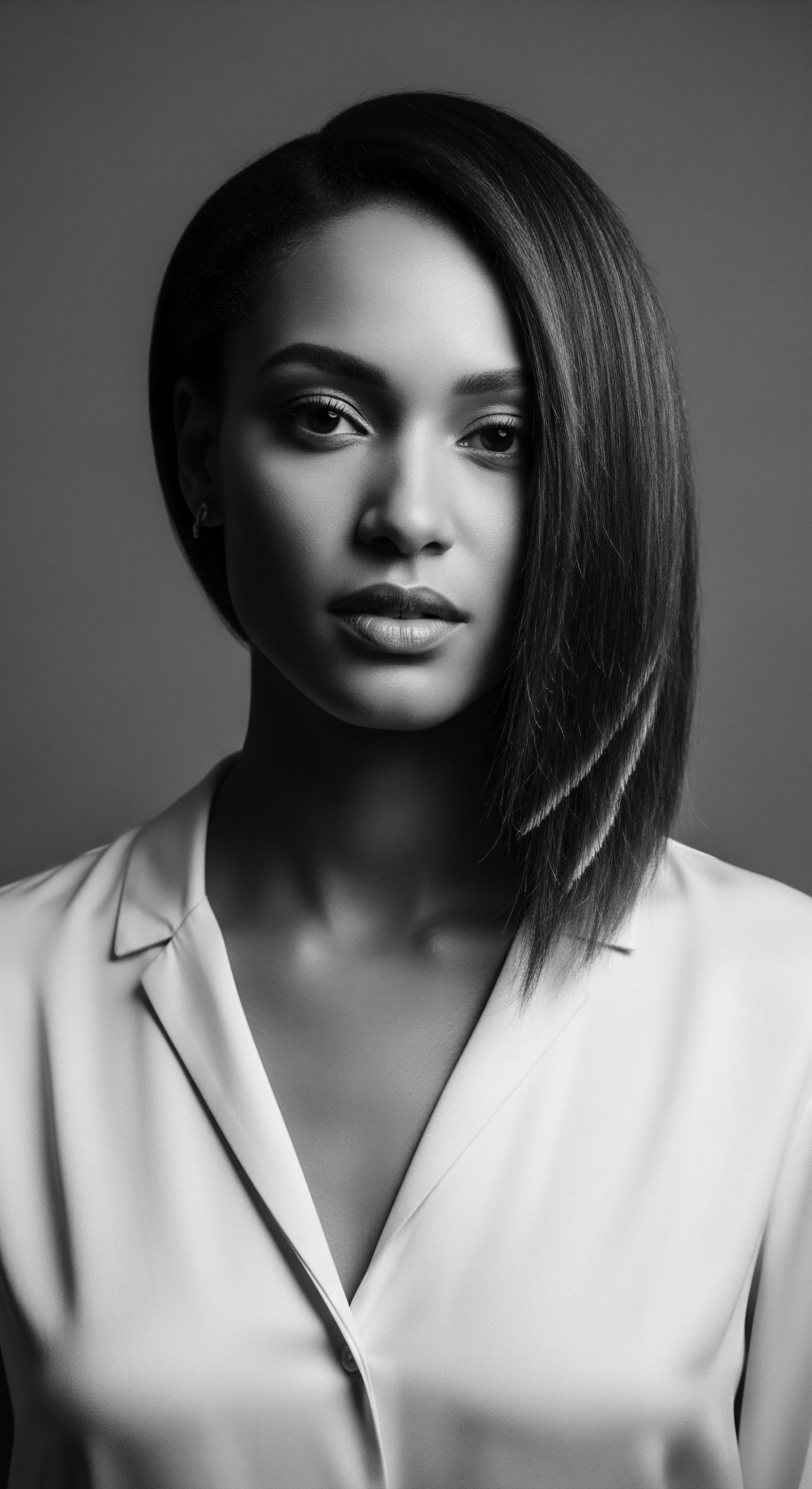
Ingredient Deep Dives for Textured Hair Needs
The efficacy of many modern hair care ingredients for textured hair can be traced back to their traditional applications within ancestral communities. These indigenous ingredients often provided profound benefits long before scientific analysis validated their properties.
| Traditional Ingredient Shea Butter (Vitellaria paradoxa) |
| Ancestral Use Widely used across West Africa for skin and hair moisture, sun protection, and healing. |
| Modern Hair Benefit Rich in vitamins A, E, and F, it provides intense conditioning, reduces breakage, and seals in moisture for coiled hair. |
| Traditional Ingredient Chebe Powder (Chad) |
| Ancestral Use A blend of natural herbs and seeds applied to hair to prevent breakage and retain length. Basara Arab women in Chad are known for their exceptionally long hair. |
| Modern Hair Benefit Strengthens hair, reduces split ends, and locks in moisture, supporting length retention without direct growth. |
| Traditional Ingredient Baobab Oil (Africa) |
| Ancestral Use Used for skin and hair nourishment, particularly in Southern and Central Africa. |
| Modern Hair Benefit Contains omega fatty acids, providing deep moisture, improving elasticity, and supporting scalp health. |
| Traditional Ingredient African Black Soap (West Africa) |
| Ancestral Use A traditional cleanser for body and hair, made from plantain skins, palm oil, and shea butter. |
| Modern Hair Benefit Gently cleanses scalp and hair without stripping natural oils, offering purifying properties. |
| Traditional Ingredient The enduring utility of these ancestral ingredients underscores a profound, intuitive knowledge of plant properties for textured hair wellness. |
This historical connection between traditional ingredients and observed benefits strengthens the argument for reclaiming natural approaches to hair care. It underscores that true innovation sometimes means looking back, recognizing the genius embedded in practices passed down through generations, and understanding their practical application for healthy, strong textured hair.

Textured Hair Problem Solving Compendium
Addressing textured hair challenges, such as dryness, breakage, and scalp irritation, requires a blend of ancient wisdom and contemporary solutions. Ancestral communities, despite lacking modern dermatological tools, developed sophisticated methods for maintaining scalp health and promoting hair integrity. They understood that a healthy foundation was paramount for vibrant hair.
For dryness, traditional methods involved consistent oiling and butter applications, often combined with water-based practices. Breakage was minimized through gentle manipulation, protective styling, and natural hair strengthening ingredients. Scalp issues were often addressed with herbal rinses and plant-based poultices known for their anti-inflammatory or antimicrobial properties. These remedies, often passed down through families, provided a holistic approach to problem-solving.
Today, modern science can offer a deeper understanding of the biological mechanisms at play, such as the specific proteins involved in hair strength or the microbial balance of the scalp. Yet, this scientific insight often validates the wisdom of ancestral practices, providing a bridge between traditional knowledge and contemporary care. Reclaiming natural hair involves not just the style, but also the informed and intentional care that addresses its specific needs, often finding solutions that echo remedies used for centuries.
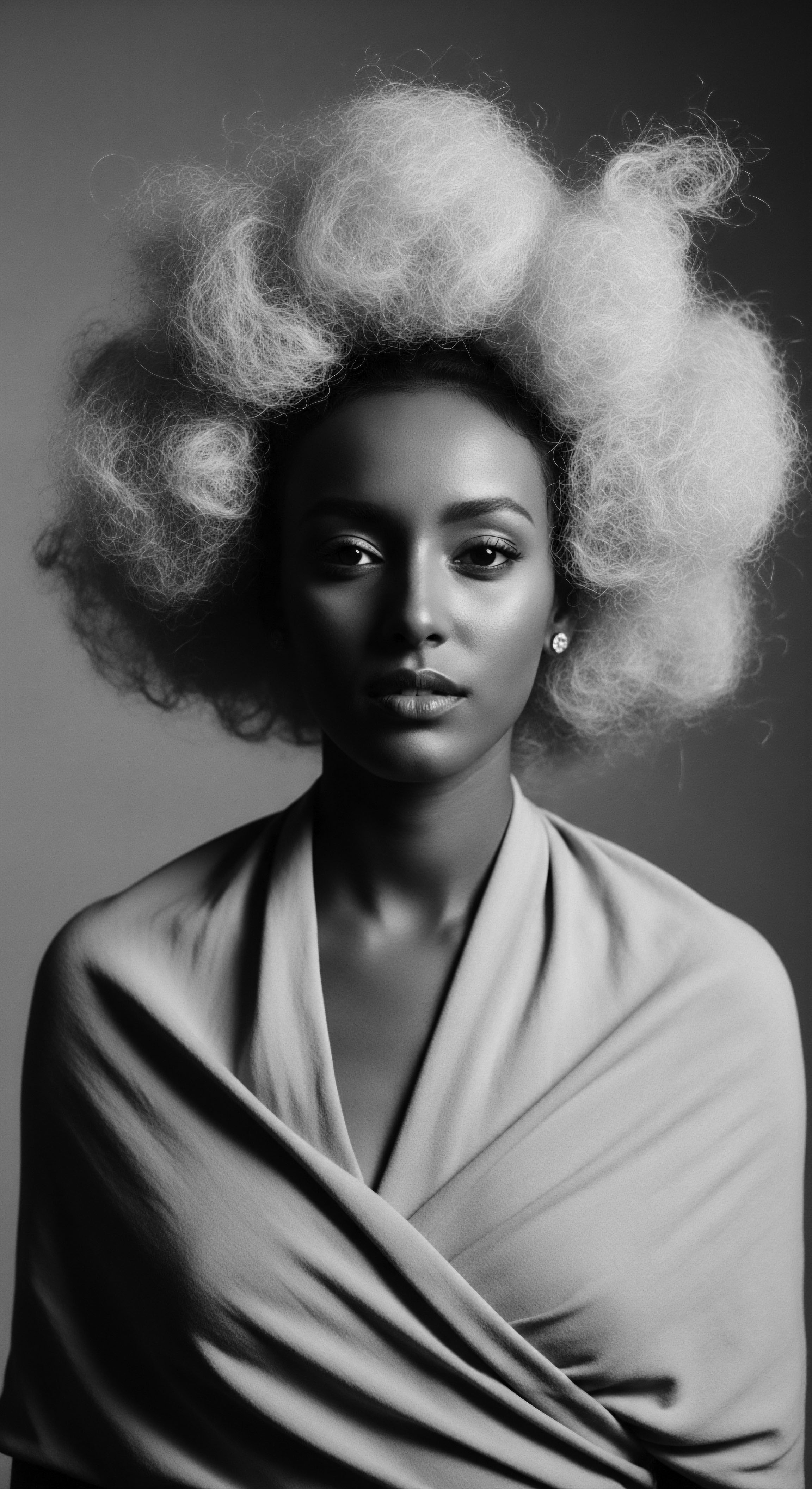
Holistic Influences on Hair Health
The understanding that hair health extends beyond topical application is a concept deeply embedded in ancestral wellness philosophies. Many African traditions viewed the body as an interconnected system, where physical, emotional, and spiritual well-being influenced every aspect, including hair. Stress, diet, spiritual harmony, and communal support were all understood to contribute to a person’s overall vitality, which, in turn, reflected in the condition of their hair.
For instance, shared hair care sessions were not simply about grooming; they were social events that strengthened community bonds, providing emotional support and connection. The collective energy of these gatherings likely had a positive impact on individual well-being, indirectly contributing to hair health. This holistic perspective contrasts with a more compartmentalized modern approach that might treat hair as a separate entity from the rest of the body. Reclaiming natural hair, then, involves embracing this broader view, recognizing that true radiance emanates from within and is nurtured by practices that nourish the entire self, just as ancestral wisdom always taught.

Relay
The act of reclaiming natural hair stands as a testament to the enduring spirit of heritage, a powerful connection between ancestral practices and contemporary identity. This journey transcends mere aesthetic choice; it becomes a deep conversation with history, a vibrant expression of cultural pride, and a tangible link to the resilient legacy of Black and mixed-race communities across the globe. Understanding this connection requires examining not only the evolution of hair practices but also the profound socio-political implications that have shaped perceptions of textured hair through time.
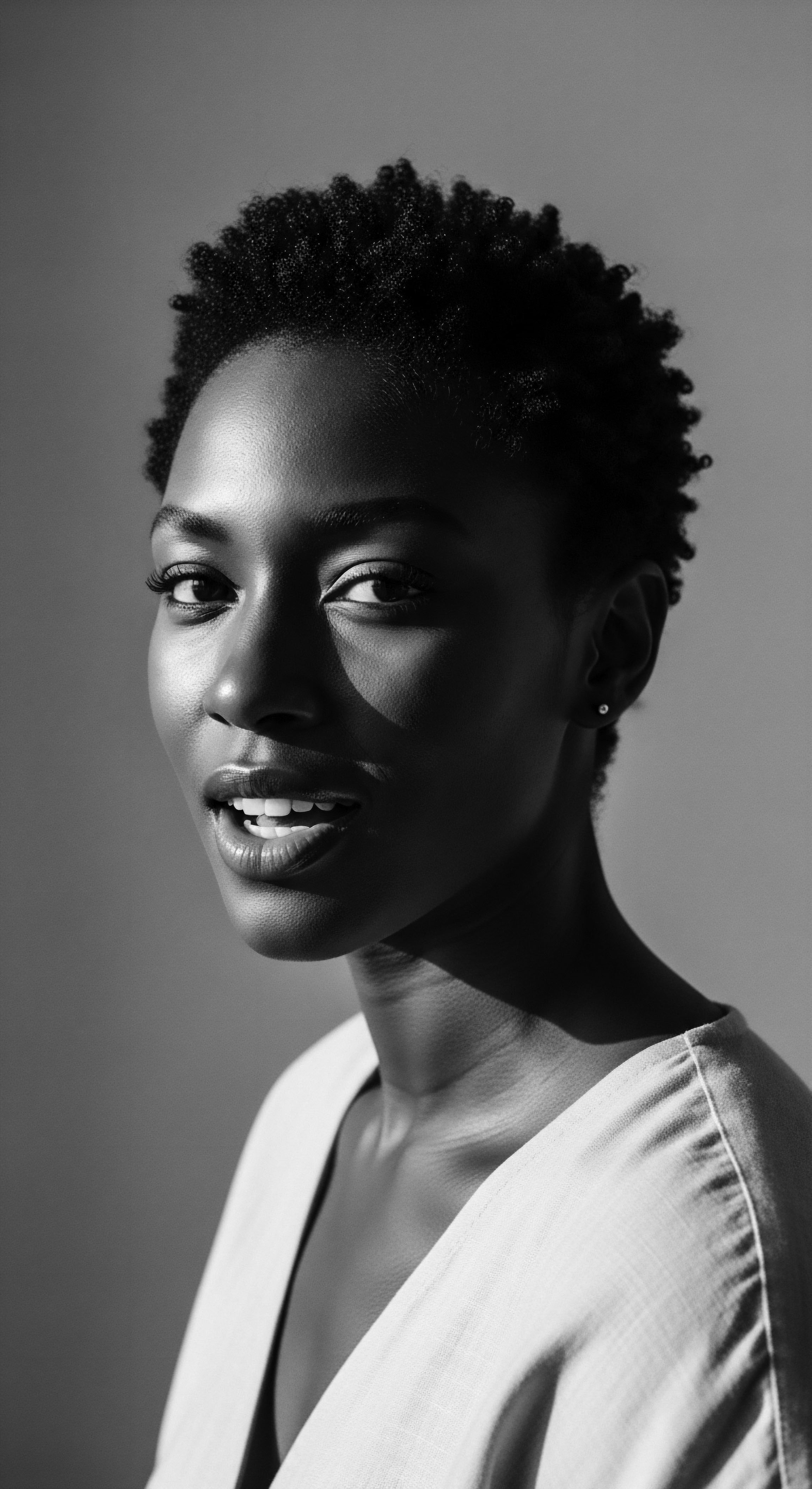
The Historical Erasure of Textured Hair Knowledge
For millennia, in pre-colonial Africa, hair served as a sophisticated visual language, a vibrant record of an individual’s life story, social standing, marital status, and spiritual beliefs (Afriklens, 2024). The meticulous processes involved in styling and maintaining these elaborate looks were often communal rituals, strengthening family and community ties (Ayana Byrd & Lori Tharps, 2001, cited in Henderson, 2022). However, the transatlantic slave trade and subsequent colonial periods violently disrupted these traditions.
Enslaved Africans were often forcibly shaved, an act designed to dehumanize, sever cultural ties, and strip away identity (Gale Review, 2021). This systemic attack on hair was a deliberate attempt to erase a profound aspect of African heritage, leaving generations disconnected from traditional practices and self-perception.
This historical trauma introduced a deeply ingrained preference for Eurocentric beauty standards, leading to the widespread adoption of chemical straighteners and hot combs in later centuries to mimic textures deemed “acceptable” by dominant society (Byrd & Tharps, 2001; Rosado, 2003, 2007; as cited in Matjila, 2020). The suppression of natural hair became a tool of oppression, contributing to internalized racial oppression where textured hair was pathologized as “unruly” or “unprofessional” (LaMar & Rolle, 2023). Reclaiming natural hair today, then, is a direct act of undoing this historical erasure, a conscious decision to re-establish the broken links and celebrate the beauty that was once deemed undesirable.
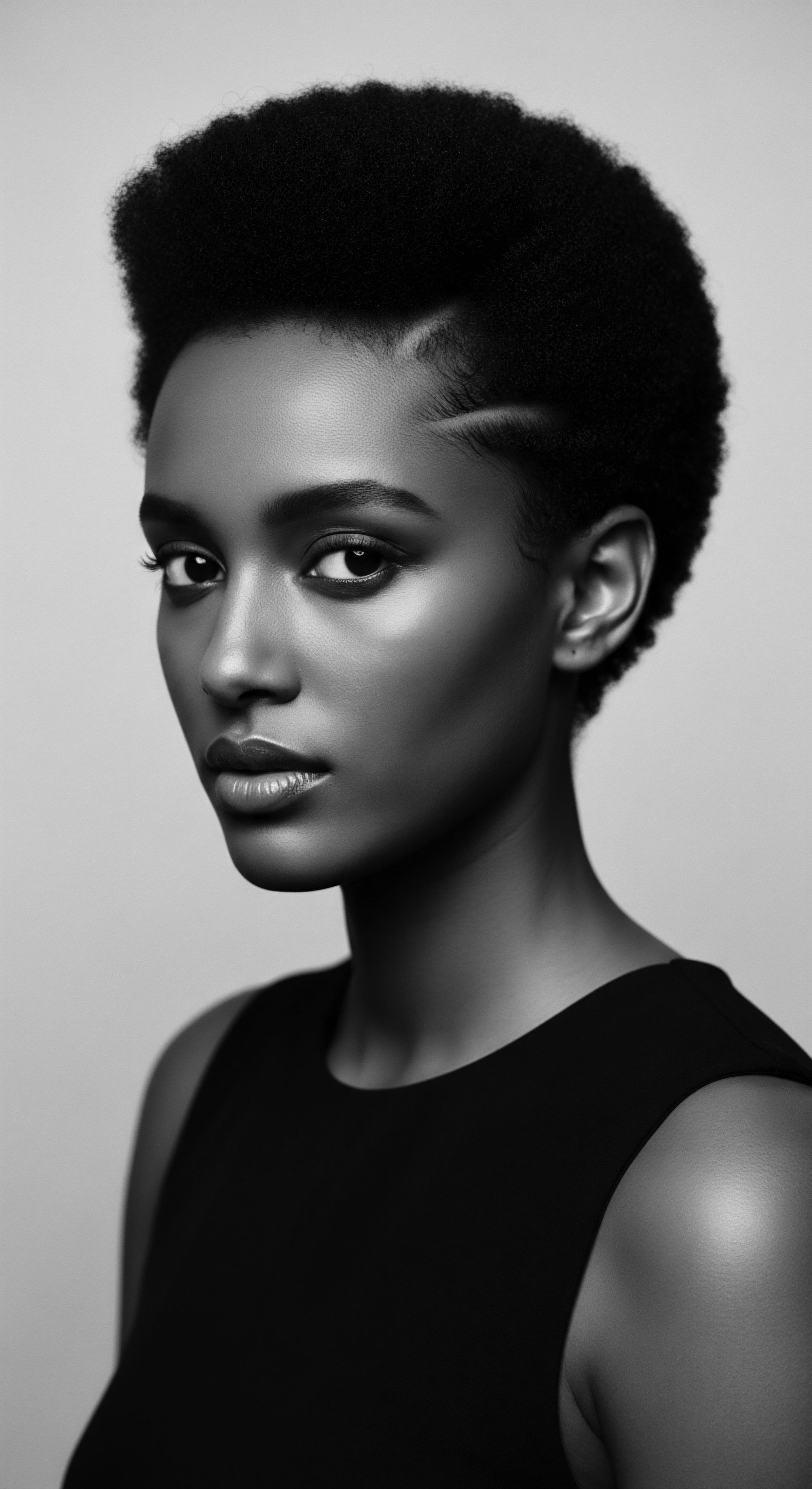
How Did Hair Become a Symbol of Resistance?
Despite deliberate attempts to strip away their hair heritage, enslaved Africans and their descendants continually found ways to assert their identity through hair. Cornrows, for instance, became clandestine maps for escape routes, sometimes even concealing rice and seeds for sustenance, a powerful act of ingenuity and defiance (BLAM UK CIC, 2022). In the mid-20th century, during the Civil Rights Movement, the Afro emerged as an unmistakable symbol of Black pride and activism, a visual declaration of self-acceptance and a rejection of imposed beauty norms (EBSCO Research Starters, 2024). This shift, popularized by figures like Angela Davis, transformed hair into a political statement, showcasing collective strength and a return to roots (Henderson, 2022).
This legacy of resistance continues today, as natural hair remains a powerful assertion against discrimination in workplaces and schools (Don’t touch my hair! ❉ A guide to investigating race-based hair discrimination, 2022).
Hair’s enduring power as a symbol of resistance highlights its role in challenging oppressive norms and affirming cultural identity.

The Science of Coiled Resilience and Ancestral Understanding
Modern scientific inquiry into afro-textured hair reveals its remarkable resilience and unique properties, often validating the intuitive understanding of ancestral hair practices. The tightly coiled structure of textured hair, characterized by its elliptical cross-section and curved follicle, is naturally prone to dryness due to the slower distribution of sebum along the hair shaft (British Journal of Dermatology, 2024). This inherent dryness, combined with the multiple twists and turns in each strand, makes textured hair susceptible to breakage if not moisturized and handled gently.
Yet, this very structure also contributes to its strength and protective qualities. Evolutionary biologists believe that textured hair evolved to protect the scalp from intense ultraviolet (UV) radiation (EBSCO Research Starters, 2024). Ancestral practices, such as deep oiling, sealing with butters, and protective styling, intuitively addressed these scientific realities. The Basara Arab women of Chad, for example, have for generations used Chebe powder, a blend of natural herbs and seeds, to coat their hair, preventing breakage and retaining remarkable length.
Modern analysis reveals that Chebe powder works by strengthening the hair shaft and locking in moisture, aligning perfectly with the hair’s natural needs (The History of Chebe Powder, 2025). This intersection of ancient practice and contemporary science provides a deeper appreciation for the ingenuity embedded in traditional hair care.

Sociocultural Identity in the Modern Era
The reclamation of natural hair in the present day is a multifaceted phenomenon that speaks to profound shifts in sociocultural identity. It represents a conscious move away from what some scholars term “internalized racial oppression,” where Eurocentric beauty standards dictated self-worth and hair choices (LaMar & Rolle, 2023). The natural hair movement, particularly in the 21st century, is a socio-cultural movement that empowers Black women to define their own beauty standards and re-align their identity with Africa and the African Diaspora (Nyela, 2020).
This renewed pride in textured hair is a vibrant expression of cultural affirmation, challenging long-standing biases and driving conversations around diversity and inclusivity. The passing of legislation like the CROWN Act in parts of the United States, which bans discrimination based on hair texture or protective styles, directly addresses the persistent challenges faced by individuals with textured hair in professional and educational settings (LaMar & Rolle, 2023). This legal recognition underscores the continuing struggle against hair discrimination, even as the movement gains momentum.
The shift towards embracing natural hair also highlights a growing consumer market for products tailored to its unique needs, empowering Black entrepreneurs and fostering a sense of community around shared experiences and traditional practices. The very act of wearing natural hair is a public declaration, communicating a connection to ancestral roots, resilience, and a redefined standard of beauty that celebrates intrinsic identity.

Reflection
The journey of reclaiming natural hair is a continuous conversation, a living, breathing archive of resilience and beauty. It is the ‘Soul of a Strand’ laid bare, revealing not just the unique biology of textured hair, but the profound stories etched within its very being. From the intricate braids that once carried coded messages of freedom to the vibrant Afros that declared unapologetic pride, each curl and coil whispers tales of generations past. This reclamation is a testament to the enduring power of heritage, a conscious return to ancestral practices and a reaffirmation of identity in a world that often sought to erase it.
It is an act of deep reverence, honoring the wisdom passed down through hands that braided, oiled, and nurtured hair, understanding its sacred connection to spirit, community, and self. The movement to embrace natural hair today is more than a trend; it is a profound cultural resurgence, a collective turning back to the source. It is about understanding that our hair is not simply an adornment, but a vibrant conduit to our ancestry, a symbol of strength and beauty that has defied erasure, and a legacy that continues to shape our present and illuminate our future.
References
- Afriklens. (2024, November 1). African Hairstyles ❉ Cultural Significance and Legacy.
- BLAM UK CIC. (2022, September 15). The History of Black Hair.
- British Journal of Dermatology. (2024, June 28). A historical journey of the structure, texture, and identity of afro-textured hair.
- Gale Review. (2021, November 23). African Hairstyles – The “Dreaded” Colonial Legacy.
- Henderson, M. A. (2022, April 29). A Public Health Concern for Black Women and Girls.
- LaMar, K. L. & Rolle, H. N. (2023). How Media Influence about Hair Texture Impacts Internalized Racial Oppression and Why The Crown Act Simultaneously Promotes. Journal of Psychology & Behavioral Science.
- L’Oréal. (2024). Support for dermatological research in Sub-Saharan Africa ❉ insights from African hair and skin research programs. PubMed.
- Matjila, C. R. (2020, November 30). The meaning of hair for Southern African Black women. UFS.
- Nyela, O. (2020, April 23). Examining Afrocentricity and Identity Through the Reemergence and Expression of Natural Hair. RIT Digital Institutional Repository.
- The History of Chebe Powder ❉ An Ancient African Hair Secret for Hair Growth. (2025, March 15).
- Valerie Keter. (2025, January 24). Impact of Hair Cutting on African Identity. TikTok.
